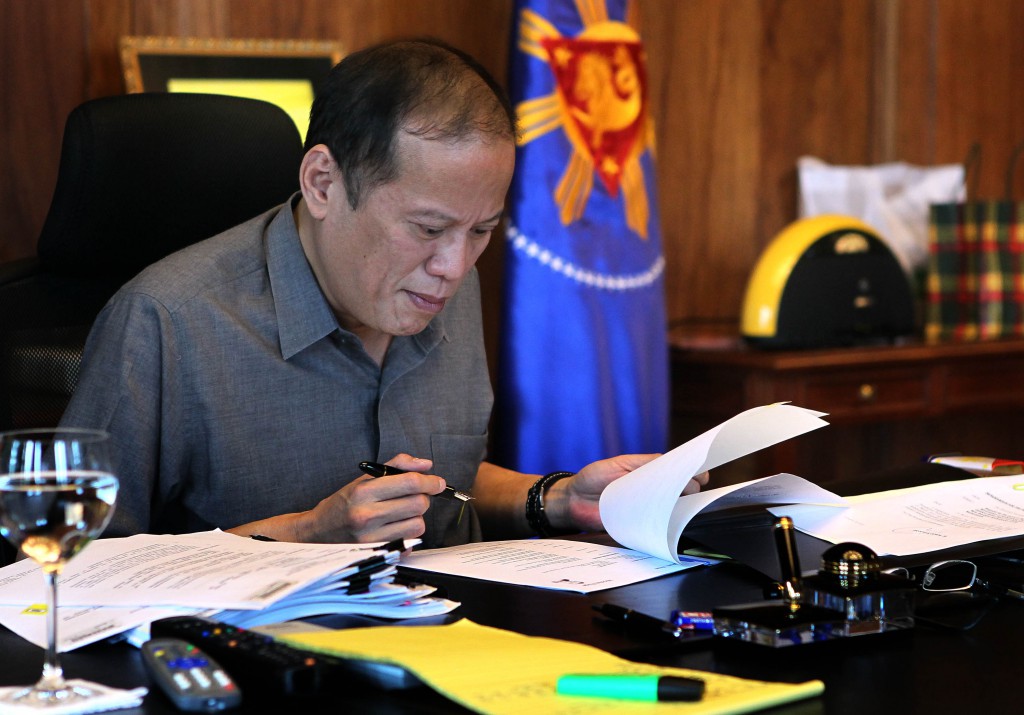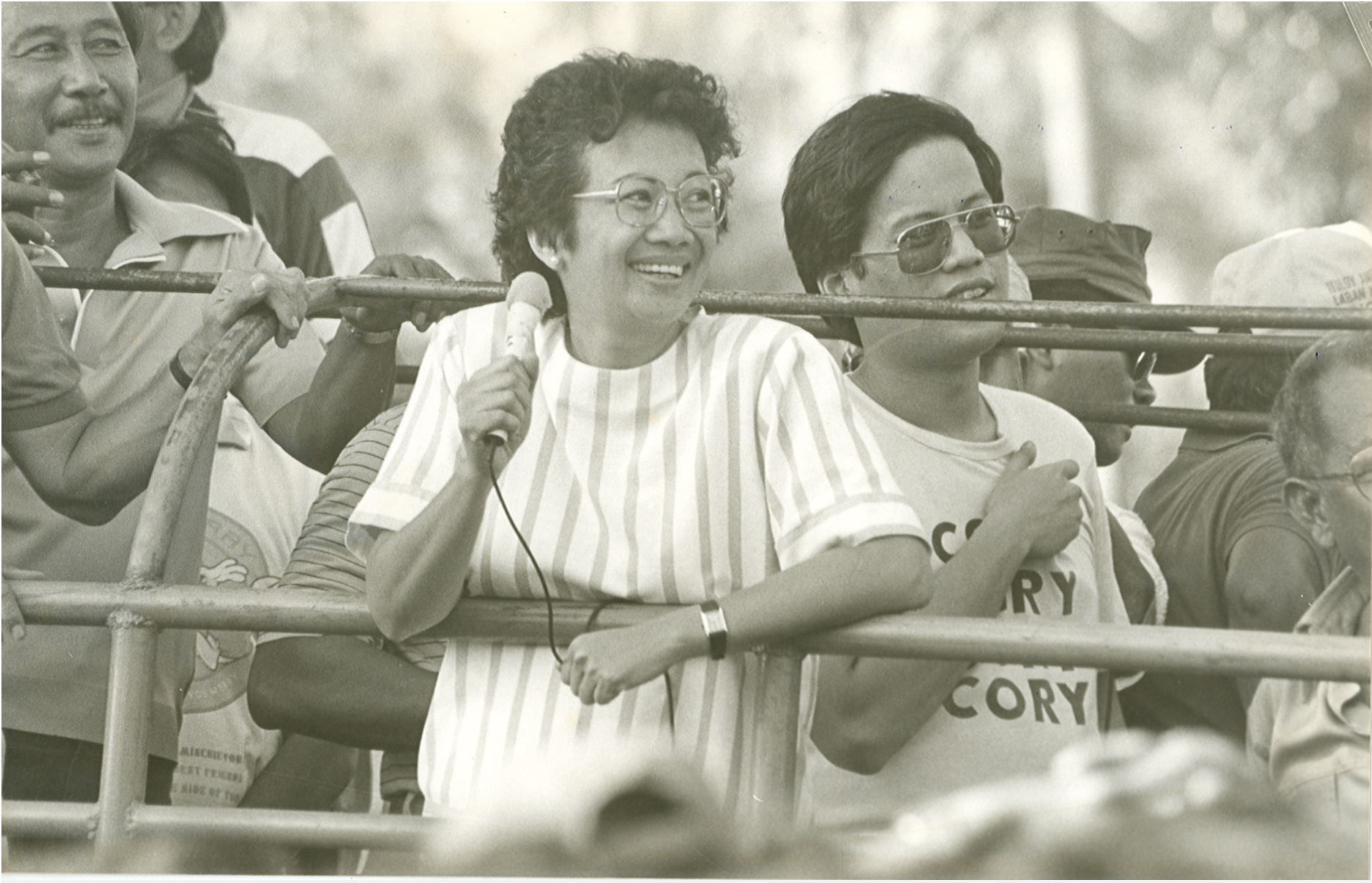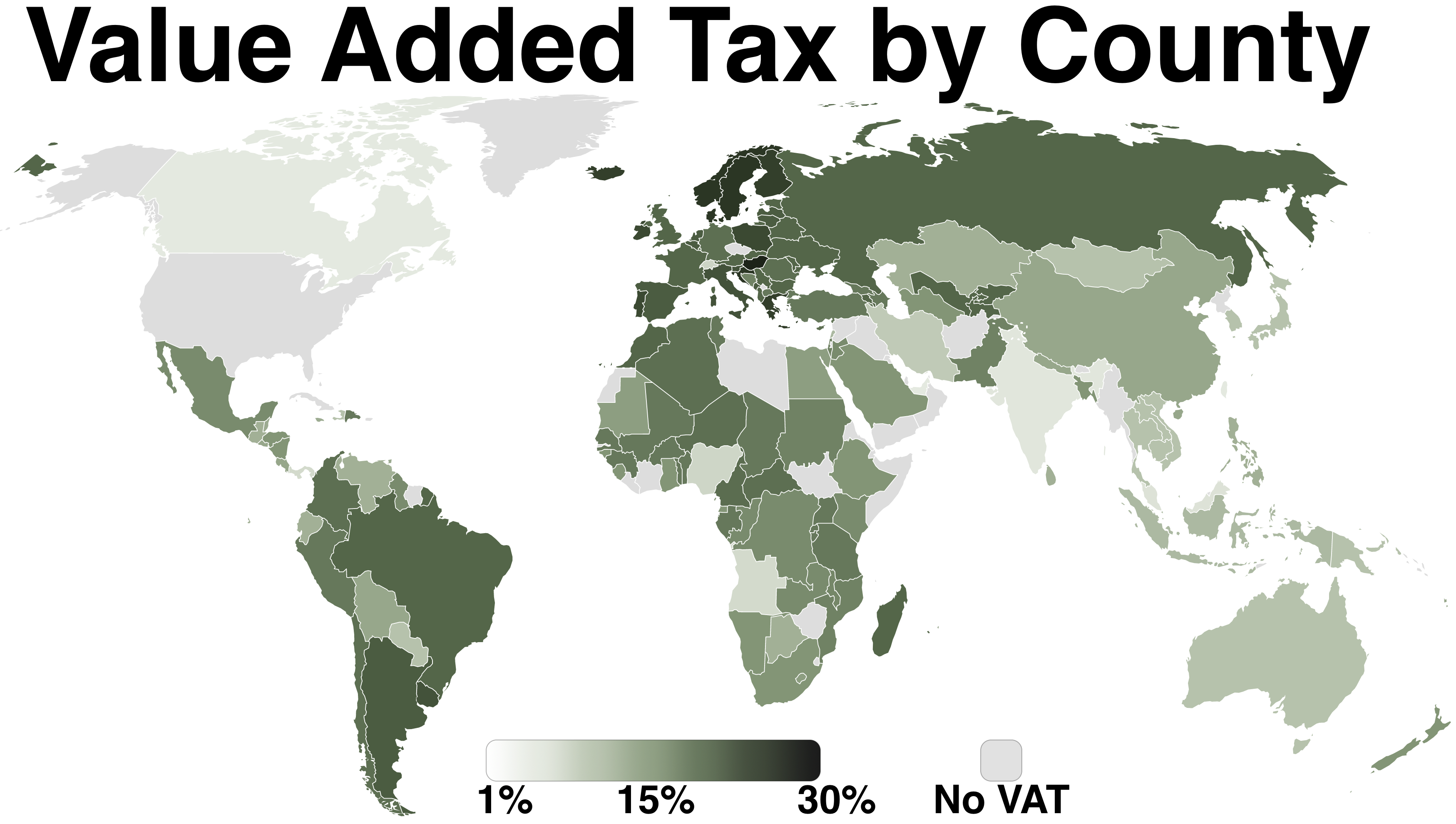|
Noynoying
Noynoying (pronounced noy-noy-YING or noy-NOY-ying) is a protest tactic in the form of neologism which critics of President of the Philippines, Philippine President Benigno Aquino III have used to question his work ethic, alleging inaction on Aquino's part on the issues of disaster response and of rising oil prices. A play on the term planking and Aquino's nickname, "Noynoy", Noynoying involves posing in a lazy manner, such as sitting idly while resting their heads on one hand and doing nothing. While the first documented use of the term dates back to October 2011, the term usage became more widely spread when protesters started using it as a protest gimmick in 2012, catching widespread attention from mainstream media and spreading virally on social media. The origins of Noynoying as a protest device have been strongly associated with the Re-affirmist faction of the Philippines' leftist movements, although its use has since spread to other groups generally critical of Aquino, ... [...More Info...] [...Related Items...] OR: [Wikipedia] [Google] [Baidu] |
Benigno Aquino III
Benigno Simeon Cojuangco Aquino III (; February 8, 1960 – June 24, 2021), also known as Noynoy Aquino and colloquially as PNoy, was a Filipino politician who served as the 15th president of the Philippines from 2010 to 2016. The son of assassinated politician Benigno Aquino Jr. and 11th president Corazon Aquino, he was a fourth-generation politician as part of the Aquino family of Tarlac. Benigno Aquino III previously served as a member of the House of Representatives and Senate from 1998 to 2010, and also as a deputy speaker of the House of Representatives from 2004 to 2006. On September 9, 2009, shortly after the death of his mother, he announced his candidacy in the 2010 presidential election, which he eventually won. He was sworn into office as the 15th president of the Philippines on June 30, 2010, succeeding Gloria Macapagal Arroyo. [...More Info...] [...Related Items...] OR: [Wikipedia] [Google] [Baidu] |
Culture Jamming
Culture jamming (sometimes also guerrilla communication) is a form of protest used by many anti-consumerist social movements to disrupt or subvert media culture and its mainstream cultural institutions, including corporate advertising. It attempts to "expose the methods of domination" of mass society. Culture jamming employs techniques originally associated with Letterist International, and later Situationist International known as ''détournement.'' It uses the language and rhetoric of mainstream culture to subversively critique the social institutions that produce that culture. Tactics include editing company logos to critique the respective companies, products, or concepts they represent, or wearing fashion statements that criticize the current fashion trends by deliberately clashing with them.Boden, Sharon and Williams, Simon J. (2002) "Consumption and Emotion: The Romantic Ethic Revisited", Sociology 36(3):493–512 Culture jamming often entails using mass media to ... [...More Info...] [...Related Items...] OR: [Wikipedia] [Google] [Baidu] |
How To Noynoying Poster
How may refer to: * How (greeting), a word used in some misrepresentations of Native American/First Nations speech * How, an interrogative word in English grammar Art and entertainment Literature * ''How'' (book), a 2007 book by Dov Seidman * ''HOW'' (magazine), a magazine for graphic designers * H.O.W. Journal, an American art and literary journal Music * "How", a song by The Cranberries from '' Everybody Else Is Doing It, So Why Can't We?'' * "How", a song by Maroon 5 from ''Hands All Over'' * "How", a song by Regina Spektor from ''What We Saw from the Cheap Seats'' * "How", a song by Daughter from '' Not to Disappear'' * "How?" (song), by John Lennon Other media * HOW (graffiti artist), Raoul Perre, New York graffiti muralist * ''How'' (TV series), a British children's television show * ''How'' (video game), a platform game People * How (surname) * HOW (graffiti artist), Raoul Perre, New York graffiti muralist Places * How, Cumbria, England * How, Wisconsin, ... [...More Info...] [...Related Items...] OR: [Wikipedia] [Google] [Baidu] |
Legislative Districts Of Zambales
The legislative districts of Zambales are the representations of the Provinces of the Philippines, province of Zambales and the Cities of the Philippines#Independent cities, highly urbanized city of Olongapo in the List of legislatures of the Philippines, various national legislatures of the Philippines. The province and the city are currently represented in the House of Representatives of the Philippines, lower house of the Congress of the Philippines through their #1st District, first and #2nd District, second congressional districts. History Zambales, including the city of Olongapo (chartered in 1966), comprised a lone district from 1898 to 1972. The province and chartered city were represented in the Interim Batasang Pambansa as part of Interim Batasang Pambansa#Regional Representatives, Region III from 1978 to 1984. Zambales elected Regular Batasang Pambansa#Members, one representative to the Regular Batasang Pambansa in 1984 Philippine parliamentary election, 1984, with Olo ... [...More Info...] [...Related Items...] OR: [Wikipedia] [Google] [Baidu] |
Mitos Magsaysay
Maria Milagros "Mitos" Habana-Magsaysay (born January 4, 1964), is a Filipino politician who served as Congresswoman of the 1st district of Zambales from 2004 to 2013, and was a senatorial candidate of the United Nationalist Alliance in the 2013 election. Political career She was a representative from the 1st District of Zambales for 3 consecutive terms. Mitos Magsaysay claimed in February 2013 that the Liberal Party was using arm-twisting tactics on some politicians and local executives who are friendly to United Nationalist Alliance (UNA). On November 27, 2018, Magsaysay officially filed her certificate of candidacy for Congresswoman of the 1st district of Zambales and Olongapo City. To reclaim her seat in the House of Representatives, she was up against incumbent 1st District Congressman Jeffrey Khonghun who was gunning for his 3rd and last term as representative of the first district of Zambales. She was a Partido Federal ng Pilipinas (PFP) candidate and, after the 2019 el ... [...More Info...] [...Related Items...] OR: [Wikipedia] [Google] [Baidu] |
Value Added Tax
A value-added tax (VAT), known in some countries as a goods and services tax (GST), is a type of tax that is assessed incrementally. It is levied on the price of a product or service at each stage of production, distribution, or sale to the end consumer. If the ultimate consumer is a business that collects and pays to the government VAT on its products or services, it can reclaim the tax paid. It is similar to, and is often compared with, a sales tax. VAT is an indirect tax because the person who ultimately bears the burden of the tax is not necessarily the same person as the one who pays the tax to the tax authorities. Not all localities require VAT to be charged, and exports are often exempt. VAT is usually implemented as a destination-based tax, where the tax rate is based on the location of the consumer and applied to the sales price. The terms VAT, GST, and the more general consumption tax are sometimes used interchangeably. VAT raises about a fifth of total tax revenues ... [...More Info...] [...Related Items...] OR: [Wikipedia] [Google] [Baidu] |
Feliciano Belmonte, Jr
Feliciano may refer to: People *Feliciano (name), including a list of people with the name Places *San José de Feliciano, Argentine city *Feliciano River, river in Argentina *Estadio Feliciano Gambarte Estadio Feliciano Gambarte, nicknamed ''La Bodega'', is a stadium in Godoy Cruz, Mendoza, Argentina. It is used primarily for association football, football matches and is owned and operated by Godoy Cruz Antonio Tomba. The stadium, inaugurated in ..., stadium in Argentina * Dom Feliciano, municipality in Brazil {{disambiguation, geo ... [...More Info...] [...Related Items...] OR: [Wikipedia] [Google] [Baidu] |
Speaker Of The House Of Representatives Of The Philippines
The speaker of the House of Representatives of the Philippines ( fil, Ispiker ng Kapulungan ng mga Kinatawan ng Pilipinas), more popularly known as the House speaker, is the presiding officer and the highest-ranking official of the lower house of Congress, the House of Representatives, as well as the fourth-highest official of the government of the Philippines. The speaker is elected by a majority of all of the representatives from among themselves. The speaker is the third and last in the line of succession to the presidency, after the vice president and the Senate president. A speaker may be removed from office in a coup, or can be replaced by death or resignation. In some cases, a speaker may be compelled to resign at the middle of a Congress' session after he has lost support of the majority of congressmen; in that case, an election for a new speaker is held. Despite being a partisan official, the speaker (or whoever is presiding) does not vote unless in breaking ties in a ... [...More Info...] [...Related Items...] OR: [Wikipedia] [Google] [Baidu] |
House Of Representatives Of The Philippines
The House of Representatives of the Philippines ( fil, Kapulungan ng mga Kinatawan ng Pilipinas, italic=unset, ''Kamara'' or ''Kamara de Representantes'' from the Spanish word ''cámara'', meaning "chamber") is the lower house of Congress, the bicameral legislature of the Philippines, with the Senate of the Philippines as the upper house. The lower house is usually called Congress, although the term collectively refers to both houses. Members of the House are officially styled as ''representative'' (''kinatawan'') and sometimes informally called ''congressmen'' or ''congresswomen'' (''mga kongresista'') and are elected to a three-year term. They can be re-elected, but cannot serve more than three consecutive terms except with an interruption of one term like the senate. Around eighty percent of congressmen are district representatives, representing a particular geographical area. The 19th Congress has 253 congressional districts. Party-list representatives are elected through t ... [...More Info...] [...Related Items...] OR: [Wikipedia] [Google] [Baidu] |
Bayan Muna
Bayan Muna () is a party-list in the Philippines, a member of the leftist political coalition Makabayan. The motto of the party is ''"New Politics, the Politics of Change"'', against "traditional, elitist, pro-imperialist politics". Its platform includes the advocation of a government that progressively supports the working class, with meaningful representation of all democratic sectors in the Philippines. Bayan Muna was the second most popular party-list party in the 2007 Philippine elections. In 2009, Bayan Muna Representative Satur Ocampo and former Bayan Muna and incumbent Gabriela Representative Liza Maza ran for senate seats as guest candidates under the ticket of billionaire real estate magnate Senator Manny Villar. Ocampo said that their common objective “is to emancipate the people from widespread poverty and social injustice." Electoral performance 2007 elections In the weeks leading up the Philippine national election, Executive Secretary Eduardo Ermita, on be ... [...More Info...] [...Related Items...] OR: [Wikipedia] [Google] [Baidu] |
Teodoro Casiño
Teodoro "Teddy" Acevedo Casiño (, born 15 November 1968) is a Filipino activist, writer, and journalist. He was a member of the House of Representatives for Bayan Muna. Early life and career Born in Davao City to middle class parents, Casiño finished elementary education at the De La Salle University (DLSU) in 1982. He continued his high school studies at La Salle Green Hills, where his stint as a volunteer for the National Movement for Free Elections (NAMFREL) in the 1986 snap elections swept him into the politics of People Power via the EDSA Revolution. The EDSA experience, plus the stories about hunger in Negros, moved him to forego a DLSU scholarship to study agriculture in UP Los Baños, where he became an activist in his freshman year. He became editor in chief of the student paper, ''The UPLB Perspective'', from 1989–1991 even as he consistently made it to the honor roll. In 1991, Casiño was elected national president of the College Editors Guild of the Philippi ... [...More Info...] [...Related Items...] OR: [Wikipedia] [Google] [Baidu] |
Tagalog Language
Tagalog (, ; ; ''Baybayin'': ) is an Austronesian languages, Austronesian language spoken as a first language by the ethnic Tagalog people, who make up a quarter of the population of the Philippines, and as a second language by the majority. Its Standard language, standardized form, official language, officially named Filipino language, ''Filipino'', is the national language of the Philippines, and is one of two official languages, alongside Philippine English, English. Tagalog is closely related to other Philippine languages, such as the Bikol languages, Ilocano language, Ilocano, the Bisayan languages, Kapampangan language, Kapampangan, and Pangasinan language, Pangasinan, and more distantly to other Austronesian languages, such as the Formosan languages of Taiwan, Indonesian language, Indonesian, Malay language, Malay, Hawaiian language, Hawaiian, Māori language, Māori, and Malagasy language, Malagasy. Classification Tagalog is a Central Philippine languages, Central Phi ... [...More Info...] [...Related Items...] OR: [Wikipedia] [Google] [Baidu] |


.jpg)
.jpg)




